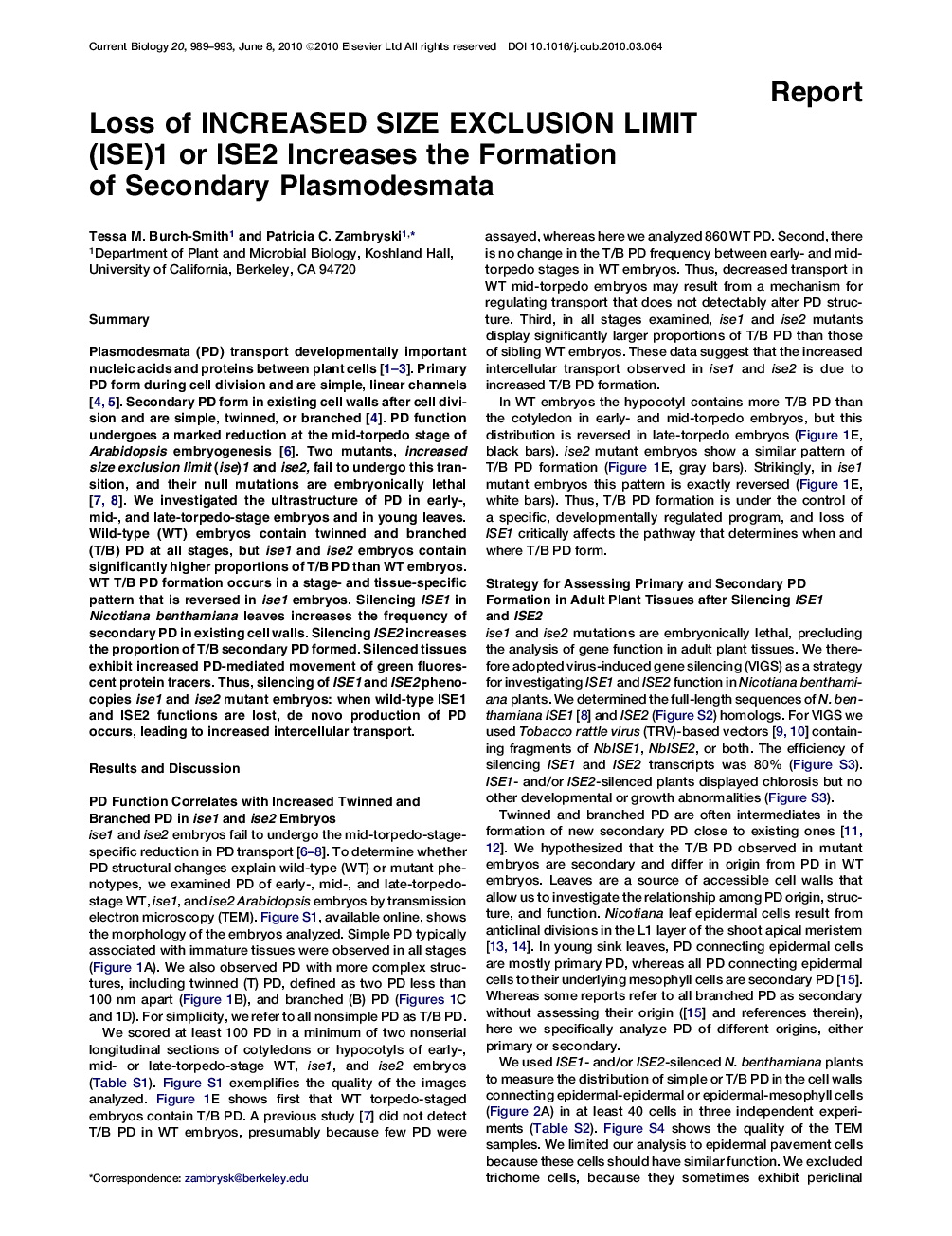| Article ID | Journal | Published Year | Pages | File Type |
|---|---|---|---|---|
| 2042982 | Current Biology | 2010 | 5 Pages |
SummaryPlasmodesmata (PD) transport developmentally important nucleic acids and proteins between plant cells [1, 2 and 3]. Primary PD form during cell division and are simple, linear channels [4 and 5]. Secondary PD form in existing cell walls after cell division and are simple, twinned, or branched [4]. PD function undergoes a marked reduction at the mid-torpedo stage of Arabidopsis embryogenesis [ 6]. Two mutants, increased size exclusion limit (ise)1 and ise2, fail to undergo this transition, and their null mutations are embryonically lethal [ 7 and 8]. We investigated the ultrastructure of PD in early-, mid-, and late-torpedo-stage embryos and in young leaves. Wild-type (WT) embryos contain twinned and branched (T/B) PD at all stages, but ise1 and ise2 embryos contain significantly higher proportions of T/B PD than WT embryos. WT T/B PD formation occurs in a stage- and tissue-specific pattern that is reversed in ise1 embryos. Silencing ISE1 in Nicotiana benthamiana leaves increases the frequency of secondary PD in existing cell walls. Silencing ISE2 increases the proportion of T/B secondary PD formed. Silenced tissues exhibit increased PD-mediated movement of green fluorescent protein tracers. Thus, silencing of ISE1 and ISE2 phenocopies ise1 and ise2 mutant embryos: when wild-type ISE1 and ISE2 functions are lost, de novo production of PD occurs, leading to increased intercellular transport.
► Arabidopsis torpedo-stage embryos contain twinned and branched (T/B) PD ► T/B plasmodesmata (PD) formation is genetically regulated ► Increased T/B PD formation correlates with more cell-to-cell transport in ise1 and ise2 embryos ► Reduced ISE1 and/or ISE2 transcripts increase secondary PD formation and intercellular transport
